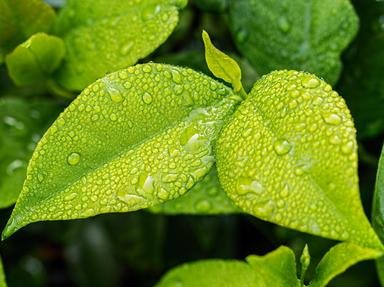Quiz Answer Key and Fun Facts
1. Suspect number 1 is a prim, proper English lady. As we are sleuthing around her home, she invites us to join her family for dinner. She's cooked a traditional English roast chicken dinner with all the trimmings. As we sit down, we smell the unmistakable aroma of sage. In which element of the roast dinner will we find it?
2. With suspect 1 in custody, we travel north to find suspect number 2. He's a farmer from the East Midlands with a taste for dairy in savoury forms. As we snoop around his house we can't find anything... until we open his fridge and smell a pungent, slightly mouldy aroma with an unmistakable hit of sage. What have we found?
3. Suspect number 2 has been foiled! It's time to cross a body of water to visit suspect number 3. She's a cultured lady from the City of Light, who invites us to nibble on a baguette as we search her home. We can't smell any sage though. In fact, she tells us that she doesn't know any traditional recipes that include sage. Which country are we most likely to be in?
4. Leaving suspect 3 to her innocent life, we continue across Europe to Italy. Here, we meet suspect 4, a moustached Italian man who invites us in and offers us a bowl of pasta whilst we search. We watch him make the pasta and begin to think that we're wrong again. However, as he serves us steaming bowls, we both start to smell sage. What has he most likely mixed sage with before using it to dress the pasta?
5. With suspect 4 safely caught, we head to North Africa. When we arrive in Egypt we're told that our fifth suspect is part of a nomadic tribe called the Bedouin people. We follow them out into the desert and when we get there they offer us a drink which smells strongly of sage. What is it?
6. Leaving North Africa behind, we trek over to China, where we meet our sixth suspect - a wise woman and healer. I ask her if she's got any sage on her premises. She shakes her head and says "I only have danshen for treating cardiovascular diseases". As I turn to walk away you stop me and inform me that, in fact, "danshen" is just another name for what?
7. After your clever capture of the sixth suspect, we pop into the local Italian restaurant hoping for some traditional fare. You order 'Saltimbocca' and, as it arrives, there's a familiar, suspicious smell in the air. What is Saltimbocca?
8. It's time to move on. Our next suspect is in North America so we fly over and land on what is known as a "reservation" to speak to some indigenous people. We don't need to search this place - we can smell the sage immediately. It's being burned in a spiritual cleansing ceremony. This tradition has many names, including "Sacred Smoke Bowl Blessing" and which of the following?
9. We're still looking for the culprit in the North American reservation. Luckily, we get a lead when we interrogate a helpful young woman who tells us that "the sage was burned by the sage"! Who has she told us has been burning the herb we seek?
10. Finally, we've caught all the culprits and are ready to return home with the missing sage. We sit down for a rest and turn on the radio, thoroughly sick of the sight and smell of sage. Oh no! Just when we thought we'd finished our investigation, we hear the lyrics "Parsley, sage, rosemary and thyme..." We can't get the radio to switch off so we are stuck with it. What herb-infused 1968 single by American duo Simon & Garfunkel are we stuck listening to as a fitting end to our sleuthing?
Source: Author
suzidunc
This quiz was reviewed by FunTrivia editor
agony before going online.
Any errors found in FunTrivia content are routinely corrected through our feedback system.
